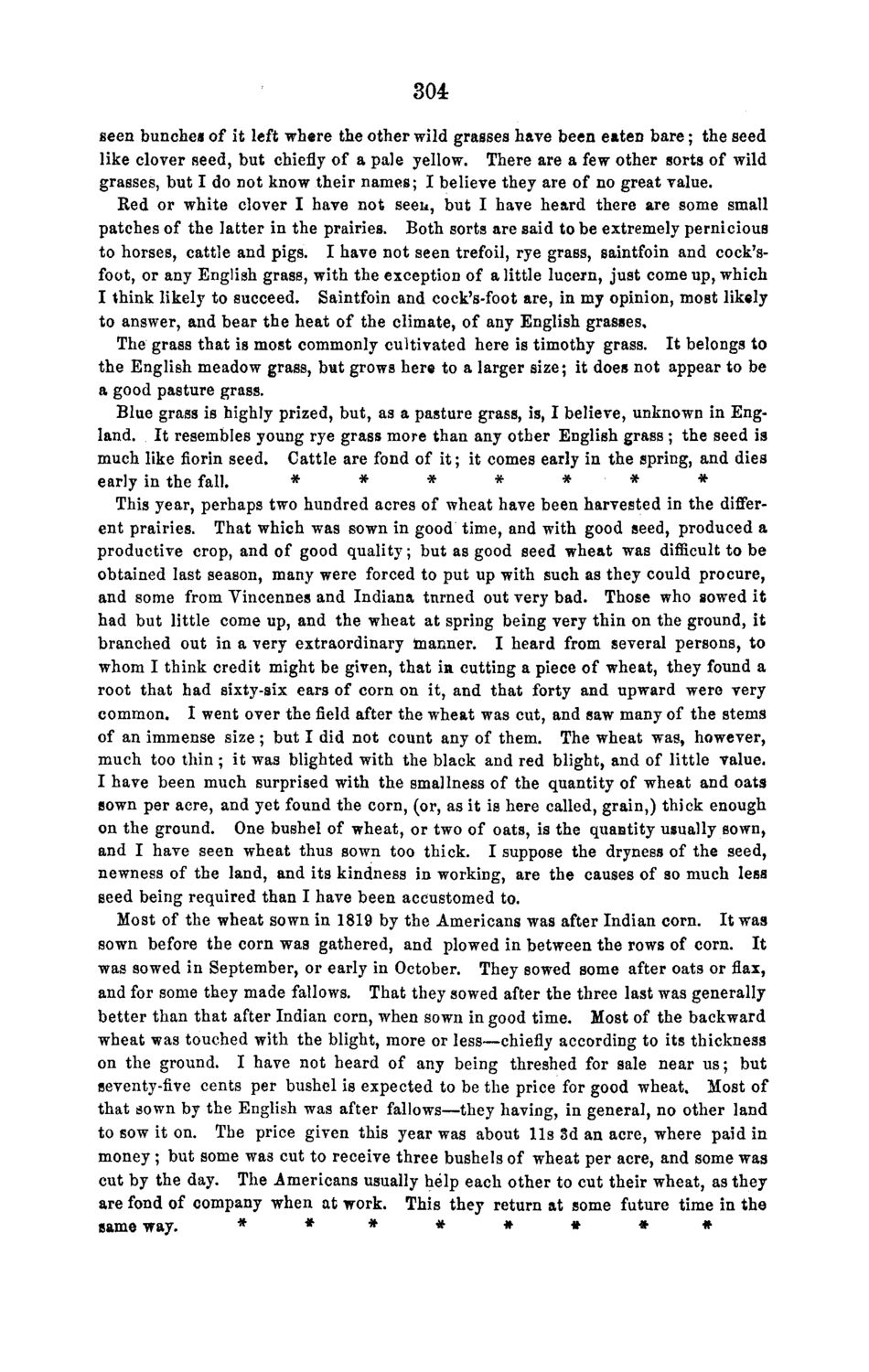| |
| |
Caption: Board of Trustees Minutes - 1868
This is a reduced-resolution page image for fast online browsing.

EXTRACTED TEXT FROM PAGE:
304: seen bunches of it left where the other wild grasses have been eaten bare; the seed like clover seed, but chiefly of a pale yellow. There are a few other sorts of wild grasses, but I do not know their names; I believe they are of no great value. Red or white clover I have not seen, but I have heard there are some small patches of the latter in the prairies. Both sorts are said to be extremely pernicious to horses, cattle and pigs. I have not seen trefoil, rye grass, saintfoin and cock'sfoot, or any English grass, with the exception of a little lucern, just come up, which I think likely to succeed. Saintfoin and cock's-foot are, in my opinion, most likely to answer, and bear the heat of the climate, of any English grasses, The grass that is most commonly cultivated here is timothy grass. It belongs to the English meadow grass, but grows here to a larger size; it does not appear to be a good pasture grass. Blue grass is highly prized, but, as a pasture grass, is, I believe, unknown in England. It resembles young rye grass more than any other English grass ; the seed is much like florin seed. Cattle are fond of it; it comes early in the spring, and dies early in the fall. * * * * • • # * This year, perhaps two hundred acres of wheat have been harvested in the different prairies. That which was sown in good time, and with good seed, produced a productive crop, and of good quality; but as good seed wheat was difficult to be obtained last season, many were forced to put up with such as they could procure, and some from Yincennes and Indiana turned out very bad. Those who sowed it had but little come up, and the wheat at spring being very thin on the ground, it branched out in a very extraordinary manner. I heard from several persons, to whom I think credit might be given, that in cutting a piece of wheat, they found a root that had sixty-six ears of corn on it, and that forty and upward were very common. I went over the field after the wheat was cut, and saw many of the stems of an immense size ; but I did not count any of them. The wheat was, however, much too thin ; it was blighted with the black and red blight, and of little value. I have been much surprised with the smallness of the quantity of wheat and oats sown per acre, and yet found the corn, (or, as it is here called, grain,) thick enough on the ground. One bushel of wheat, or two of oats, is the quantity usually sown, and I have seen wheat thus sown too thick. I suppose the dryness of the seed, newness of the land, and its kindness in working, are the causes of so much less seed being required than I have been accustomed to. Most of the wheat sown in 1819 by the Americans was after Indian corn. It was sown before the corn was gathered, and plowed in between the rows of corn. It was sowed in September, or early in October. They sowed some after oats or flax, and for some they made fallows. That they sowed after the three last was generally better than that after Indian corn, when sown in good time. Most of the backward wheat was touched with the blight, more or less—chiefly according to its thickness on the ground. I have not heard of any being threshed for sale near us; but seventy-five cents per bushel is expected to be the price for good wheat. Most of that sown by the English was after fallows—they having, in general, no other land to sow it on. The price given this year was about l i s 3d an acre, where paid in money ; but some was cut to receive three bushels of wheat per acre, and some was cut by the day. The Americans usually help each other to cut their wheat, as they are fond of company when at work. This they return at some future time in the same way. * * * # # * * #
| |